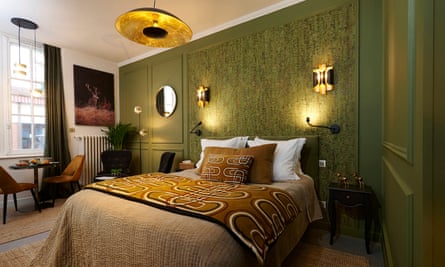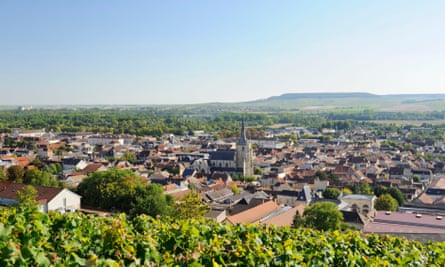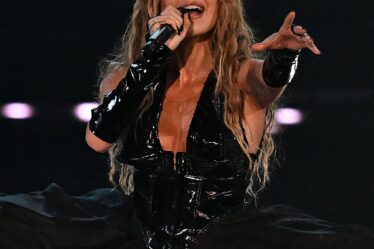
Forgive me for sounding a little smug. You would too if you were sitting in stylish lodgings sipping a glass of grand cru minutes away from a prestigious address, the Avenue de Champagne in Épernay, east of Paris. The mile-long avenue is lined with expensive champagne houses, from Moët & Chandon to Perrier-Jouët.
But instead of forking out a fortune, I’m indulging my champagne taste on a prosecco budget. That glass of top quality grand cru? It’s from a half bottle I picked up at the independent producer Mouligneaux-Gourdain for €10 (£8.70).
As for the apartment, it’s one of four in a building under the Bubble 8 name, each beautifully done up with the feel of a boutique hotel, yet at a fraction of the price, from €95 a night. They’re incredibly well equipped, with a full kitchenette allowing you to self cater on the cheap, and, bien sur, an ice bucket and champagne flutes.
A three-hour drive from the Channel tunnel, Bubble 8 is a great place for me to stay with my son Christian, who has just turned 18 and is keen to dive into the world of fizz.
Another fine place to stay is Le Logis aux Bulles (€90 a night B&B) in Verzy, between Rheims and Épernay, which has three beautifully decorated B&B rooms, offers a tour and tasting (€7) and sells Mouligneaux-Gourdain grand cru.
There’s no better place to start than the pretty village of Hautvillers, less than 15 minutes away from Épernay by car. It was here in the hillside abbey that the 17th-century cellar master Dom Pérignon supposedly cried out to his fellow monks: “Come quickly brothers, I am tasting the stars.” He might not have invented champagne, but he did refine its production, with the help of Dom Thierry Ruinart.
We pay homage to both their tombs in the quaint church before visiting the local producer G Tribaut. I could have sat in the tasting room for hours gazing through the floor-to-ceiling windows at the sea of pinstripe vines. But there’s tasting to be done, and although it costs €5 a glass, or €7 for vintages, if you buy six bottles you get three samples free. Very lovely they are, too, particularly as the least expensive comes in at €20.10.
You can taste other independent producers’ wares at the wine bar Au 36 (€21 for three glasses) in Rue Dom Pérignon, where boxes of six bottles are sold at the same price charged at the vineyards. My tip would be to avoid Au 36’s expensive dishes and pick up a sandwich or quiche at the bakery and take it to the picnic spot beyond the abbey.
By now we’re ready for a tour and tasting at one of the big champagne houses, which offer a good introduction to the champagne-making process in their labyrinthine cellars. They all offer something different, and on past trips I’ve visited many in Épernay and Rheims, half an hour away.

But they don’t come cheap – Moët charges €40 and Veuve Clicquot €35. One of the best value is Mumm in Rheims, with 15 miles (25km) of cellars divided into areas named after champagne-producing villages (look out for Bouzy and Dizy) branching off the central Champs-Élysées tunnel (€28 with tasting).
We make a day of it by train, taking in the magnificent Notre-Dame Cathedral, its gothic facade dripping with decoration and some of its stained-glass windows portraying the champagne-producing process. Thirty-three kings of France were crowned in Rheims, a tradition started when Clovis was baptised there in the fifth century by Saint Remi; you can see his carved tomb at the other end of town in the Basilica Saint-Remi.
Not far from the basilica is Vranken-Pommery, which has started good-value self guided tours (€26 with tasting). While you don’t get the same explanation as at Mumm, it’s worth going to see the enormous chalk mines quarried by the Romans, which Madame Pommery used in her own sprawling cellars, decorated with enormous chalk reliefs.
Near the station, the area around Rheims’ Les Halles du Boulingrin market is the spot to find somewhere to mop up the champagne. I’ve eaten before at Le Bocal with its selection of small seafood plates for under €10, so this time we settle down to generous cheese and meat platters at Cheese Bar for €12pp before taking the train home.

Back in Épernay, Mercier offers the best-value tours (from €20), with its underground train ride chugging through some of its 11 miles of cellars. We gape at the scale of the galleries and admire the statue of Blanche Mercier – the daughter of founder Eugène – holding a glass. Even if you don’t do the tour, pop in to see the enormous oak barrel in the lobby that needed 24 oxen to pull it to the 1889 International Exposition in Paris.
There are a couple of decent places to line our stomachs not far from the flat; Café le Progrès serves steak and chips for €17, while an excellent three-course dinner at the Cave à Champagne is just €27. And you’re not short of places to drink: you can enjoy the poshest bar crawl in the world along the Avenue de Champagne, where most champagne houses offer glasses for about €8.
To get good-value fizz to fill the car boot, though, you need to drag yourself away from this compelling street. A 10-minute drive away is the grand cru village of Aÿ, and Champagne H Goutorbe, with its superb tours and tasting for just €10. We tour the press, storage vats and rows of bottles in the cellars with Madame Goutorbe, whose husband’s family has been making champagne since the 1940s while their vine-grafting business dates to 1918. Their Brut tradition (€21.50 a bottle) comes in at the even cheaper rate of €19.50 if you buy six.

Another grand cru village, Cramant, 15 minutes from Épernay, has long featured on any trip I make to the region, because it’s home to Voirin Jumel. Their delicious brut costs €21.50 a bottle, and should you want to make full use of their wine bar or tasting classes, they also have pleasant (though quite small) B&B rooms from €74.
There’s one thing worth splashing out for on this trip, which we save until the end of our stay. Christian has long wanted to try sabrage, the art of cutting off the tip of the champagne bottle with a sword.
And so up the Avenue de Champagne we go one last time, to Comtesse Lafond’s turreted chateau to try sabrage. Lafond offers this with three tastings for €60. First up, in the atmospheric cellar with its wall of 53,651 bottles, Christian pulls off the feat with aplomb, and celebrates by raising his first glass. My own attempt, outside the impressive 19th-century chateau, takes considerably more time.
I’m about to give up when, finally, there’s a satisfying pop as the gas escapes from the sliced-off bottle top. It’s a fantastic, fizzing end to a bubble-filled trip.
The trip was provided by Marne’s agency for tourism and by Eurotunnel



